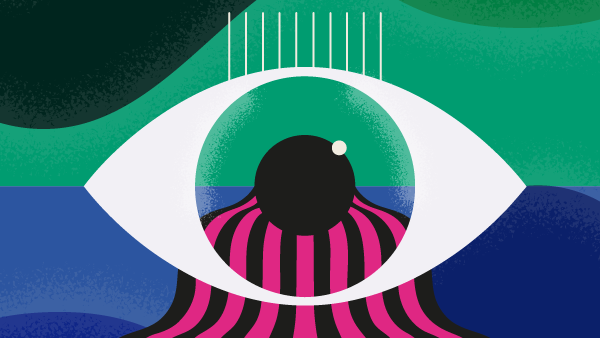VFS: Accommodating All Patients
How I’m positioning my invention – the Visual Fixation System – as a tool for grabbing the attention of patients with learning disabilities, dementia, and autism
The Visual Fixation System (VFS) allows clinicians to complete clinical measurements when cooperating with the patient is difficult. Launched in the UK in mid-2022, it uses a mobile phone to display a target that engages and/or relaxes the patient. The target is placed in the clinician’s direct line of sight, allowing for a number of clinical observations. It was initially invented to be used with dynamic retinoscopy.
My son is autistic; he has global developmental delay and a learning disability. When he was younger, he measured a large accommodative lag, but it was difficult to engage him enough with standard methods to be sure of the measurement. I felt I was getting false positive results if he didn’t engage. I wanted to be able to display a unique target that would hold his attention, and take the measurement directly along the visual axis to get the most accurate result. And that’s where the design for the Visual Fixation System came from.
All other methods of measuring accommodative lag using dynamic retinoscopy take off-axis measurements. The VFS is the only device that can take on axis measurements. Using a mobile phone means that an unlimited number of targets can be displayed and tailored to the particular needs of the patients. I usually ask patients what they want to watch or listen to; this is useful because it gives them some control over their own eye test. Young children, for example, can play their favorite TV show (using their parent’s phone if necessary). For a person with learning disabilities, you can choose a target that has the best chance of engaging the patient. An older person suffering from dementia, for example, can watch a film clip, look at photos, or listen to music.
See the VFS in use:
It has taken six years to get the product to market. Working with the various prototypes, I came to realize that the device is not only useful for measuring accommodation; it can be used for many other tests. Any direct line-of-sight examination is possible and so the possibilities are up to the clinician’s imagination. I use my device regularly in clinic for a number of observations, including cycloplegic refraction, dynamic retinoscopy, indirect ophthalmoscopy (using a 20D lens and a direct ophthalmoscope,) cover test, gross anterior photography, checking pupillary distances, and spectacle frame fits.
The device’s design means the clinician’s face is hidden from the patient, so patients who don’t like eye contact can still be examined on the visual axis. This is also useful when assessing any asymmetry of facial features, because you can get directly in line with the center of the face.
The VFS consists of a main unit and various different handles, which are interchangeable and can be selected depending on the clinical test required. There are currently two different handles for use with the device and there are more in development. (I am presently testing the handle designed for looking at gross field defects.)
I hope in the future there will be versions of the VFS that will fit on fundus cameras, OCT systems, and the other machines that we use in clinics – and that it becomes a standard piece of equipment for all eye departments.
See Simon Berry discussing the VFS on the BBC’s Look North:
Email: Simon Berry
The New Optometrist Newsletter
Permission Statement
By opting-in, you agree to receive email communications from The New Optometrist. You will stay up-to-date with optometry content, news, events and sponsors information.
You can view our privacy policy here
Most Popular
Sign up to The New Optometrist Updates
Permission Statement
By opting-in, you agree to receive email communications from The New Optometrist. You will stay up-to-date with optometry content, news, events and sponsors information.
You can view our privacy policy here
Sign up to The New Optometrist Updates
Permission Statement
By opting-in, you agree to receive email communications from The New Optometrist. You will stay up-to-date with optometry content, news, events and sponsors information.
You can view our privacy policy here







